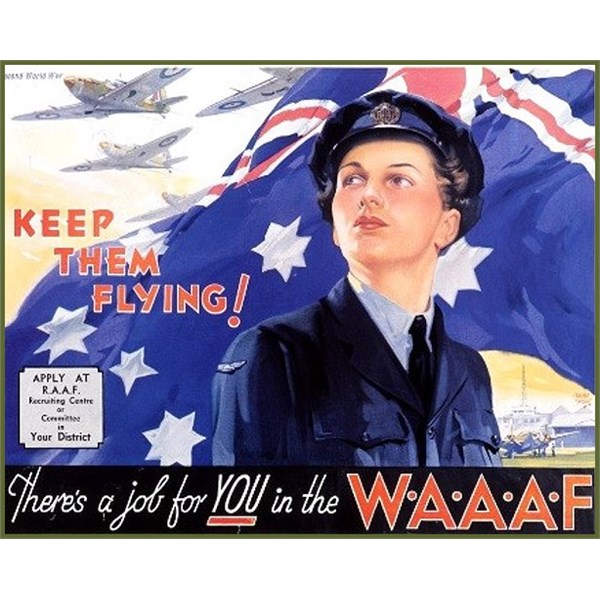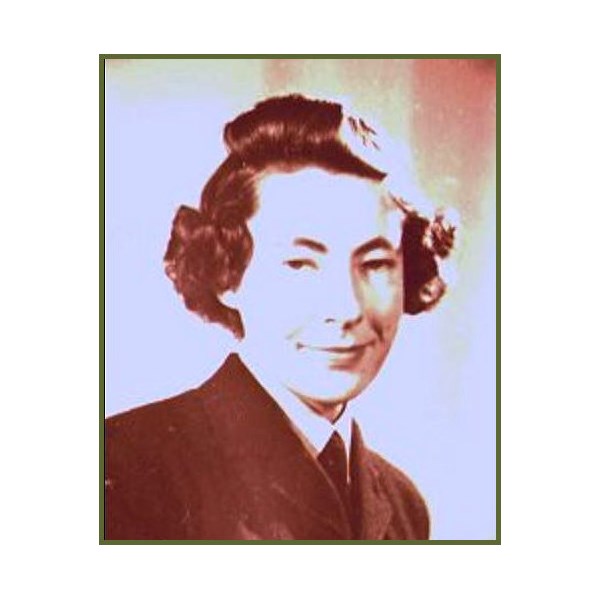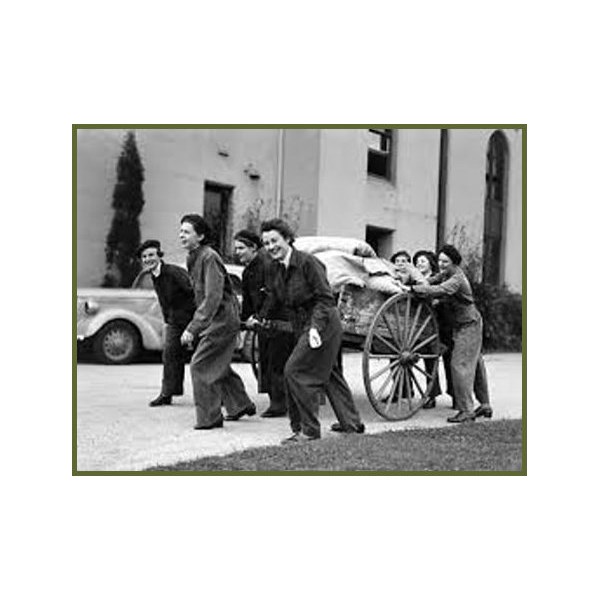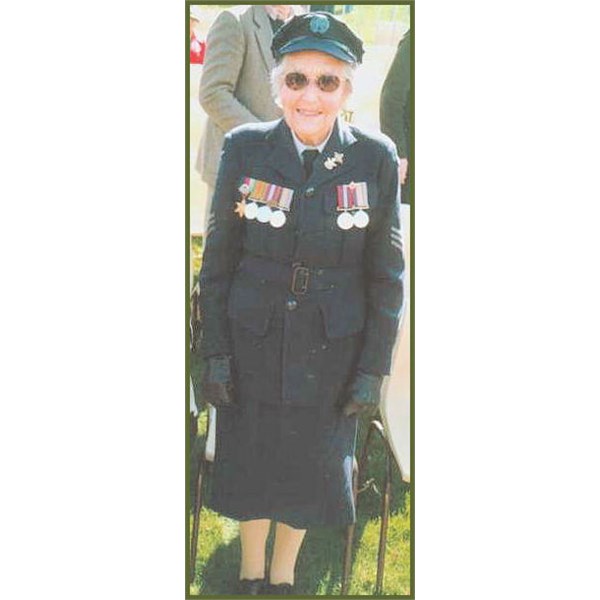The Women's Auxiliary Australian Air Force (WAAAF) was formed in March 1941 after considerable lobbying by women keen to serve and by the Chief of the Air Staff who wanted to release male personnel serving in Australia for service overseas. The WAAAF was the first and largest of the World War II Australian Women's
Services. It was disbanded in December 1947.
Not long after World War II was declared in 1939, the Royal Australian Air Force had an urgent need for more skilled and semi-skilled signals and maintenance personnel to fulfil its wartime commitments to the Empire Air Training Scheme (EATS) for local defence in Australia.

Women's Auxiliary Australian Air Force Poster

Inspection of some of the Townsville recruits on the tennis court at St. Anne's Barracks, in 1942.
On 4 February 1941, the formation of an air force women's auxiliary was approved by the War Cabinet. It had taken 14 months of difficult discussion and opposition to achieve this final outcome.
The formation of the Women's Auxiliary Australian Air Force (WAAAF) set a precedent for the formation of other women's service organisations such as The Australian Women's Army Service (AWAS) and the Women's Royal Australian Naval Service (WRANS).
Approximately 27,000 women enlisted in the WAAAF between 15 March 1941 and 24 August 1945. In June 1941, Squadron Officer
Clare Stevenson was appointed Director of the WAAAF.
The first 20 WAAAFs were posted to
Townsville between 28 October 1941 and 7 February 1942 to work at the North-Eastern Area Headquarters in Sturt Street. They were urgently required to fill the roles of teleprinter operators and general clerks. This initial intake of WAAAFs in the area were living in various homes or flats in
Townsville. The Officer-in-Charge of WAAAFs in the
Townsville area, Assistant Section Officer Yvonne Rentoul established the new WAAAF Barracks in St Anne's Church of England School in
Townsville. It was a difficult task as
Townsville was rapidly filling with American and Australian military units. This influx lead to a shortage of equipment and a demanding role in protecting the
well-being of the fresh new female recruits.

ACW 93117, Eila Bonnie Pickup in 1942
Eila Pickup ACW 93117 who later became the shorthand writer for
John Kingsford Smith in Fighter Sector at Bankstown worked in the nerve centre of the controls for the Army, Air Force and Navy to defend
Sydney. This Fighter Sector was in a tunnel below the city streets, between
Circular Quay and the Public Library in Macquarie Street, which now forms part of the Eastern Suburbs Railway or City Circle Railway.
The centre was connected to radar stations, weather signals, movements from airports, army and Volunteer Air Observer Corps reporting posts, air raid sirens, blackout control, the lot. A huge
table carried a map of the New South Wales coast and adjoining areas, on which WAAAF plotted movements of aircraft and shipping.
Here they worked with the Americans, and fought conditions vastly different from those in other earlier posting with the RAAF. We were billeted in the Metropole Hotel, occupying three of its floors. A huge
kitchen area on one floor was set up, from which they were served five course meals, even for breakfast, which offered grapefruit, doughnuts, various types of cereal, toast, eggs, bacon tomatoes, coffee etc. The girls all put on weight! At their previous posting at a school near
Newcastle the food had had to be cooked in dixies and coppers out in the quadrangle.

(WAAAF) recruits carrying their straw-filled palliasses back to their barrack huts at No 1 WAAAF Training Depot

1942 Australian propaganda poster.
During their months in the tunnel the submarine scare in
Sydney Harbour took place. They knew the subs were in because all the warnings, blackouts, sirens, etc. were set off. However, the people of
Sydney thought is was just another practice raid, and did not take too much notice. The Americans tended to panic as they thought the Japanese were possibly coming to throw a bomb into Fighter Sector Control, which they
well might have been. The guard rushed up
the steps and as some cars in Macquarie Street were still happily pursuing their way with lights on, he machine-gunned them, he actually shot an Army official through the leg as he was coming to Fighter Sector to
check up. The orders to depth charge the subs would have been given from Fighter Sector.
No.3 WAAAF Training Depot was formed at Karrinyup, Western Australia on 24 April 1942 with an establishment of 4 officers, 40 airwomen and 100 trainees who would pass through the training programme each month. No. 3 WAAAF Training Depot was disbanded on 24 March 1945.

A.C.W. Margaret Jones Carey (nee Traynor), (105088) (WAAAF
WAAAF Margaret Jones Carey amongst those killed in crash of an Avro Anson between
Coffs Harbour and Crescent Head, NSW on 7 April 1945

'One of the Originals' - WAAAF Sgt. Dorothea Watson (Andrews)
Dorothea
Watson (Andrews) in her original uniform at the 60-year Commemoration of VP Day celebrations at the Australian War Memorial in August 2005.
.